
Leopold II was the second King of the Belgians from 1865 to 1909, and the founder and sole owner of the Congo Free State from 1885 to 1908.

The Congo Free State, also known as the Independent State of the Congo, was a large state and absolute monarchy in Central Africa from 1885 to 1908. It was privately owned by King Leopold II, the constitutional monarch of the Kingdom of Belgium. In legal terms, the two separate countries were in a personal union. The Congo Free State was not a part of, nor did it belong to Belgium. Leopold was able to seize the region by convincing other European states at the Berlin Conference on Africa that he was involved in humanitarian and philanthropic work and would not tax trade. Via the International Association of the Congo, he was able to lay claim to most of the Congo Basin. On 29 May 1885, after the closure of the Berlin Conference, the king announced that he planned to name his possessions "the Congo Free State", an appellation which was not yet used at the Berlin Conference and which officially replaced "International Association of the Congo" on 1 August 1885. The Free State was privately controlled by Leopold from Brussels; he never visited it.

King Leopold's Ghost: A Story of Greed, Terror and Heroism in Colonial Africa (1998) is a best-selling popular history book by Adam Hochschild that explores the exploitation of the Congo Free State by King Leopold II of Belgium between 1885 and 1908, as well as the large-scale atrocities committed during that period. The book, also a general biography of the private life of Leopold, succeeded in increasing public awareness of these crimes in recent decades.
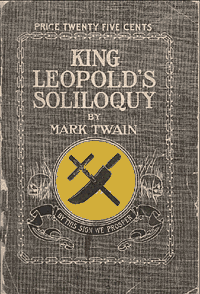
King Leopold's Soliloquy is a 1905 pamphlet by American author Mark Twain. Its subject is King Leopold's rule over the Congo Free State. A work of political satire harshly condemnatory of his actions, it ostensibly recounts a fictional monologue of Leopold II speaking in his own defense.
Documentary photography usually refers to a popular form of photography used to chronicle events or environments both significant and relevant to history and historical events as well as everyday life. It is typically undertaken as professional photojournalism, or real life reportage, but it may also be an amateur, artistic, or academic pursuit.

Edmund Dene Morel was a French-born British journalist, author, pacifist and politician.
The Congo Reform Association (CRA) was a political and humanitarian activist group that sought to promote reform of the Congo Free State, a private territory in Central Africa under the absolute sovereignty of King Leopold II. Active from 1904 to 1913, the association formed in opposition to the institutionalised practices of Congo Free State's 'rubber policy', which encouraged the need to minimise expenditure and maximise profit with no political constraints – fostering a system of coercion and terror unparalleled in contemporary colonial Africa. The group carried out a global publicity campaign across the Western world, using a range of strategies including displays of atrocity photographs; public seminars; mass rallies; celebrity endorsements; and extensive press coverage to lobby the Great Powers into pressuring reform in the Congo. The association partially achieved its aims in 1908 with the Belgian government's annexation of the Congo Free State and continued to promote reform until disbanding in 1913.
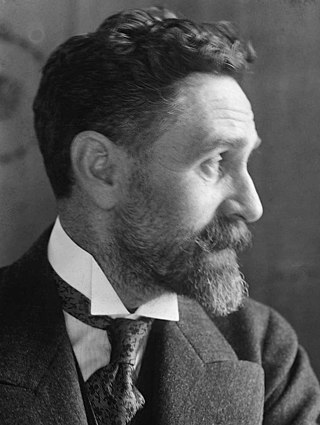
The Casement Report was a 1904 document written at the behest of the British Government by Roger Casement (1864–1916)—a British diplomat and future Irish independence fighter—detailing abuses in the Congo Free State which was under the private ownership of King Leopold II of Belgium. This report was instrumental in Leopold finally relinquishing his private holdings in Africa. Leopold had held ownership of the Congolese state since 1885, granted to him by the Berlin Conference, in which he exploited its natural resources for his own private wealth.
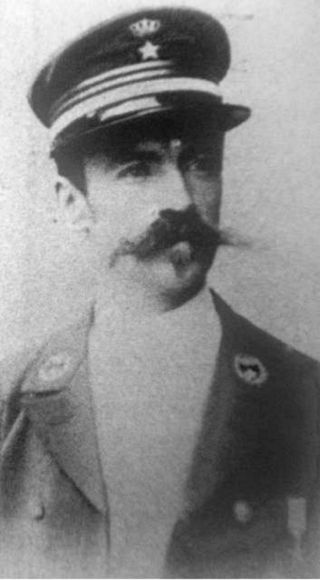
Léon Auguste Théophile Rom was a Belgian military officer and colonial administrator. His role in atrocities in the Congo Free State have led some to speculate that Rom served as an inspiration for the character of Kurtz in Joseph Conrad's 1899 novella Heart of Darkness.

Sir John Hobbis Harris was an English missionary, campaigner against slavery and Liberal Party politician.
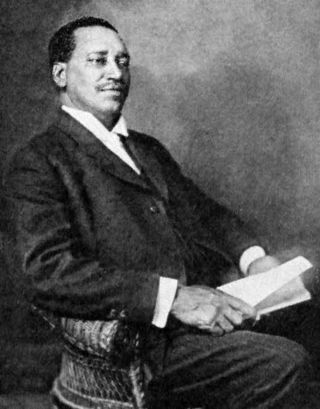
William Henry Sheppard was one of the earliest African Americans to become a missionary for the Presbyterian Church. He spent 20 years in Africa, primarily in and around the Congo Free State, and is best known for his efforts to publicize the atrocities committed against the Kuba and other Congolese peoples by King Leopold II's Force Publique.
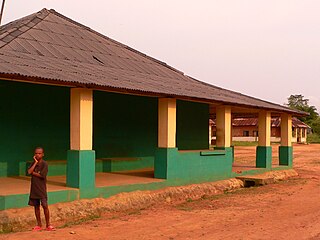
Baringa is a village in Tshuapa Province, Befale Territory in the Democratic Republic of the Congo.

The Abir Congo Company was a company that exploited natural rubber in the Congo Free State, the private property of King Leopold II of Belgium. The company was founded with British and Belgian capital and was based in Belgium. By 1898 there were no longer any British shareholders and the Anglo-Belgian India Rubber Company changed its name to the Abir Congo Company and changed its residence for tax purposes to the Free State. The company was granted a large concession in the north of the country and the rights to tax the inhabitants. This tax was taken in the form of rubber obtained from a relatively rare rubber vine. The collection system revolved around a series of trade posts along the two main rivers in the concession. Each post was commanded by a European agent and manned with armed sentries to enforce taxation and punish any rebels.

Herzekiah Andrew Shanu was a photographer recognized for his participation in the campaign against abuses in the Congo Free State.

There was a worldwide media propaganda campaign waged by both King Leopold II of Belgium and the critics of the Congo Free State and its atrocities. Leopold was very astute in using the media to support his virtual private control of the Congo. British campaigner Edmund Dene Morel successfully campaigned against Leopold and focused public attention on the violence of Leopold's rule. Morel used newspaper accounts, pamphlets, and books to publish evidence from reports, eye-witness testimony, and pictures from missionaries and others involved directly in the Congo. As Morel gained high-profile supporters, the publicity generated by his campaign eventually forced Leopold to relinquish control of the Congo to the Belgian government.

Albert Bruno Amédée Lantonnois van Rode was a Belgian Lieutenant General descendant from an aristocratic family. He was Vice-Governor General of the Congo Free State and later commanded a division during World War I.
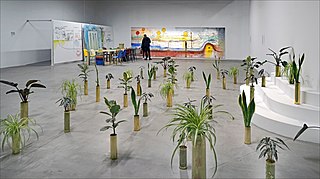
Sammy Baloji is a photographer from the Democratic Republic of the Congo. He works in Lubumbashi and Brussels, and held exhibitions in Amsterdam, Paris, Brussels, Bilbao, Cape Town and Bamako.

Daniel Jacob Danielsen, nicknamed Dollin, was a Faroese Open Brethren missionary, marine engineer, and humanitarian. While working for the Congo-Balolo Mission between 1901 and 1903, he was noted for his work with Roger Casement during the writing of the report that exposed atrocities committed in the Congo Free State: beyond acting as his engineer and interpreter, he took many of the most prominent photographs that brought the atrocities to public attention.

From 1885 to 1908, many atrocities were committed in the Congo Free State under the absolute rule of King Leopold II of Belgium. These atrocities were particularly associated with the labour policies, enforced by colonial administrators, used to collect natural rubber for export. Combined with epidemic disease, famine, and falling birth rates caused by these disruptions, the atrocities contributed to a sharp decline in the Congolese population. The magnitude of the population fall over the period is disputed, with modern estimates ranging from 1.5 million to 13 million. The atrocities have been variously referred to as the Rubber Terror and by some as the Congolese Genocide, though the latter characterization is disputed.
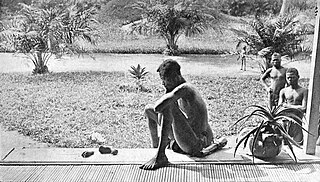
Nsala of Wala in the Nsongo District (Abir Concession) is a photograph published by Edmund Dene Morel in his book King Leopold's Rule in Africa, in 1904. The image depicts a Congolese man named Nsala examining the severed foot and hand of his five-year-old daughter, Boali. The photograph was taken by Alice Seeley Harris, the wife of a missionary, in the village of Baringa on 14 May 1904. It was subsequently employed as a tool in the media campaign against the inhumane situation in the Congo Free State, which was largely characterised by rubber exploitation.


















